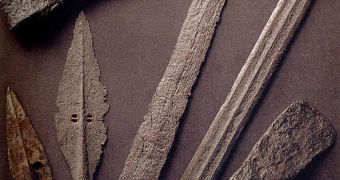A few more Iron Age secrets have been unearthed in Zincirli, southwestern Turkey, by a team of archaeologists at the University of Chicago (UC). The site is home to excavations since the 1890s, when German researchers found massive walls and other ruins, signs of a civilization that flourished here in the 8th century BC. Once the capital of a great empire, Zincirli now provides scientists with baffling testimonials of the habits that reigned in those distant times.
Among the most precious objects found, the new excavations brought to light a chiseled stele – a carved rock, containing official data of the time – which showed for the first time that the people living in the region believed that the soul separated itself from the body after death. This type of belief was very little spread back then, as the Jewish people, for example, banned the practice as heretic.
"The stele is in almost pristine condition. It is unique in its combination of pictorial and textual features and thus provides an important addition to our knowledge of ancient language and culture," said UC Neubauer Expedition director, David Schloen, who is also an associate professor at the Oriental Institute. The find is to be presented at the American Schools of Oriental Research, on November 22nd, in Boston, US.
In addition, UC professor of near eastern languages and civilization, Dennis Pardee, will present a translation of the 13 lines of text on the document at a meeting of the Society of Biblical Literature. The study will be presented during a session on "Paleographical Studies in the Near East."
This discovery could point to pre-Christian beliefs, which may have been incorporated into the dogma during the first centuries of Christianity. The separation of the soul from the body was a very delicate aspect in Ancient times, where superstition ruled the daily lives of most people.
The stele in itself was beautifully carved, depicting a man by the name of Kuttumuwa, wearing rich costumes and holding a cup of wine. Next to the image, which was probably carved in via melting, there was the text, which urged his followers to bring him food for the afterlife. In front of the plate, there were several remnants of offerings, including vessels and weapons.
Further excavation in Zincirli, the former city Sam'al, will most likely yield even more precious artifacts, which will shed more light on the way Iron Age people went about their daily lives.

 14 DAY TRIAL //
14 DAY TRIAL //